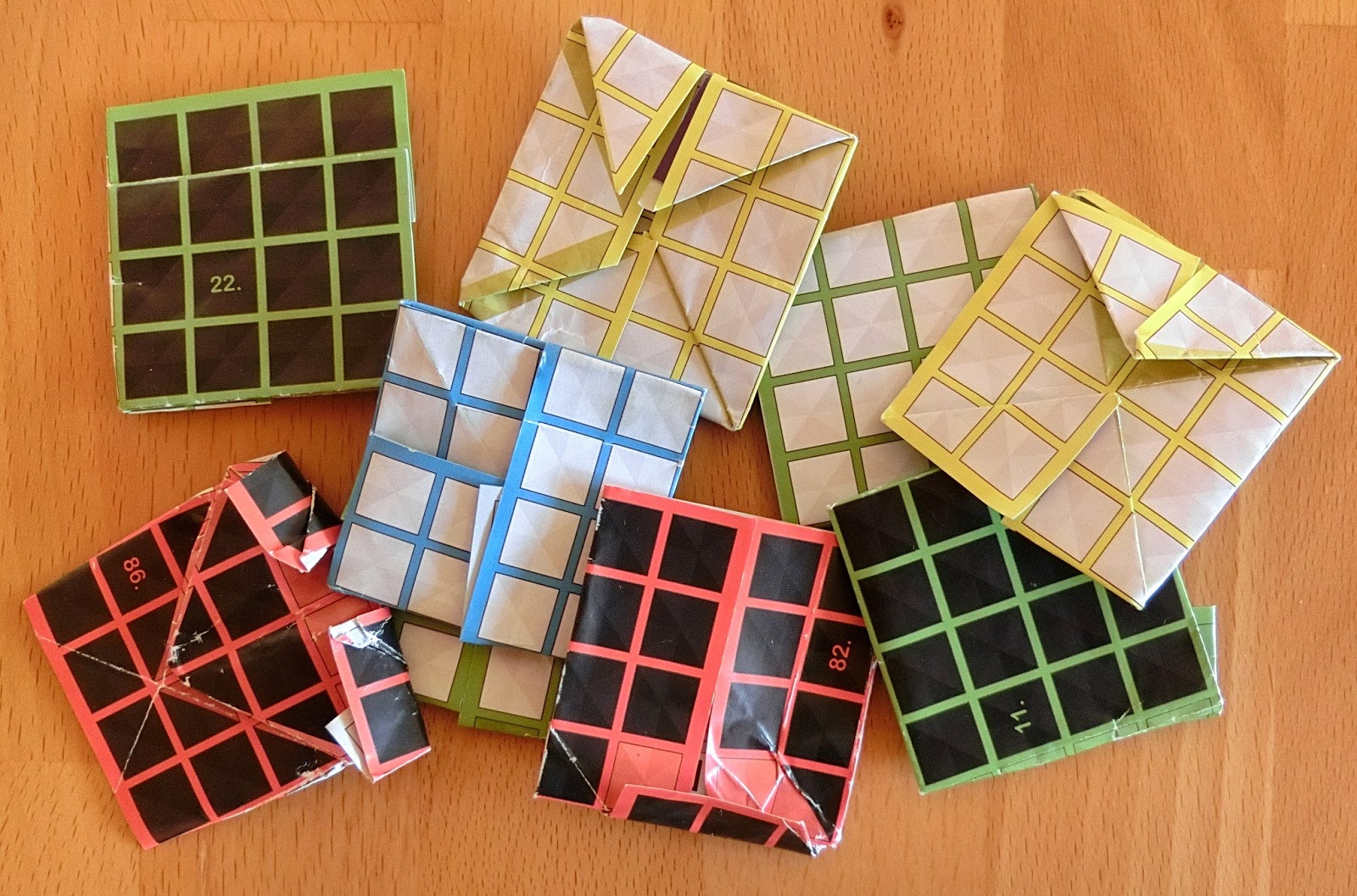Manifold - An Origami Puzzle Game
Players: 1
Ages: 10 and up
Purchase: Buy on Amazon (affiliate link)
Math Ideas: Spatial reasoning, transformations
Questions to Ask:
Can you solve just the white side? How about the black side?
Are there any techniques you used in earlier puzzles that you could try here?
Want to see some other cool stuff we can make using origami?
I picked up Manifold at a game shop shortly before a flight I took recently. It turned out to be one of the most addictive puzzle games I've ever played. As soon as I solved one puzzle, I stuffed it in the front pocket of my backpack and tore off the next one.
By the time the plane landed, my backpack was practically brimming with folded puzzles. I had solved over half the puzzles and was feeling very accomplished (I had to skip #39, but I don't want to talk about it and I'm not mad.)
This game is aimed at older kids (10+) than most of the games I review for this newsletter. It's also one of the most engaging and unique puzzle-solving experiences I've ever had. I simply had to share it with you.
How to Play
Manifold is essentially a pad of sticky-note-sized paper. Each piece of paper contains a puzzle. The goal is to fold the 8x8 grid so that only the 16 white squares are visible on one side of the paper, and only the 16 black squares are visible on the other side. You can fold the paper however you want, but you cannot tear it.
Manifold is very well designed, so the earlier puzzles teach you folding techniques and strategies that you can use later on. The game, although cheap, is single-use only. I'd recommend buying a couple of copies, since you're not going to want to share any of your puzzles once you've solved the first few.
The video above shows a quick demonstration of solving one of the puzzles, but there are still 99 more for you to try on your own! If you're interested in the game but not yet convinced, you can print out a few of the puzzles at this siteand try them for free.
Where's the Math?
If you're a regular reader of this newsletter, you already know the answer here: spatial reasoning.
Spatial reasoning is a child's ability to make sense of physical objects and their relationships to each other. There is a large body of research that shows a connection between spatial reasoning skills and later ability in math and other STEM fields, as this article attests.
When a three-year-old builds a tower out of wooden blocks, she is using and improving her spatial reasoning as she determines where to place supports, curved edges, and pointed towers. When you and your child play a game of Blokus, you are both using spatial reasoning by flipping, turning, and sliding the game pieces in your mind. And when your kids solve puzzle #39 of Manifold, they are using a series of folds that require them to visualize the paper in both two and three dimensions. If they solve it, maybe they can teach me!
Questions to Ask
Manifold is a solitaire puzzle game, so your kid might just snatch the pad of puzzles and head off to a corner. Great! They're doing valuable thinking as they advance through harder and harder iterations of the puzzle.
But if they get stuck, they might need some advice or encouragement. You can always ask them "Did you learn any techniques in earlier puzzles that you can use to solve this puzzle?" That may trigger a memory of a strategy they can put to use again.
Alternately, you can suggest that they solve one side only. Often the process of lining up the 16 white squares can teach your child valuable things about that puzzle, even if they don't immediately get the solution.
But the most important question you can ask your child is "Want to see some other cool stuff you can do with origami?"
Origami, aside from being a beautiful and relaxing form of art, is fundamentally mathematical. In fact, many university math departments contain courses on the mathematics of paper folding. Moreover, the principles of origami have been used in engineering, assisting in the design of air bags, solar panels, and even self-assembling robots!
Strange as it sounds, your child could hardly find a more valuable way of passing her spare time than folding paper. Perhaps Manifold will spark an interest in origami! There are plenty of online resourcesand kid-appropriate tutorials on the basics of origami.
Or perhaps she'll solve a few and leave the rest for another time. In either case, she's seen the versatility of a simple piece of paper.
Buy Manifold on Amazon (affiliate link)





